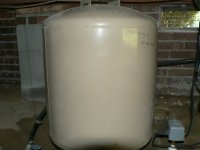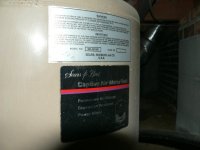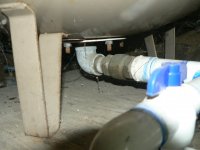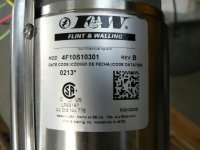TVL
Member
I've decided I want to get the water tank from underneath the house. Since I have a shop now, I also have a place at the rear of the shop that would make a good spot for the tank .............. and it would also be located right at the well instead of being about 100 feet away.
The tank I now use is a Sears Captive Air tank and has never given a bit of trouble. I check the air once every Spring and generally need to add about 5 PSI to maintain the 37 PSI with the tank empty. The pressure switch is set to cut on at 38 PSI and off at 60PSI.
Anyway, I put the tank in in 1985 and it appears to be in great shape. I was curious to see what the majority stated I should do:
1- Continue using the same tank since it has never given any trouble and appears the water bladder can be easily changed?
2- Or, purchase a new tank?
If the consensus is to replace the tank, what is the recommendation? I don't want a piece of junk that will need replacing in a few short years!
Here is a few photos of the existing tank:
The tank I now use is a Sears Captive Air tank and has never given a bit of trouble. I check the air once every Spring and generally need to add about 5 PSI to maintain the 37 PSI with the tank empty. The pressure switch is set to cut on at 38 PSI and off at 60PSI.
Anyway, I put the tank in in 1985 and it appears to be in great shape. I was curious to see what the majority stated I should do:
1- Continue using the same tank since it has never given any trouble and appears the water bladder can be easily changed?
2- Or, purchase a new tank?
If the consensus is to replace the tank, what is the recommendation? I don't want a piece of junk that will need replacing in a few short years!
Here is a few photos of the existing tank:




